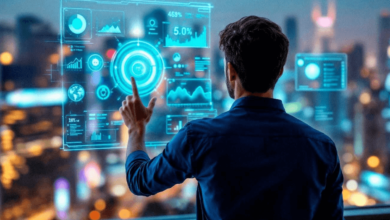In recent years, deepfake technology has emerged as one of the most alarming threats to the political landscape. What began as a novelty in entertainment has evolved into a powerful tool for deception. Today, political deepfakes hyper-realistic but fake audio or video clips—pose significant risks to democratic processes, public trust, and even national security.
As election seasons approach in democracies around the world, the potential for deepfakes to mislead voters and influence outcomes is greater than ever. This makes deepfake detection and regulation urgent priorities for governments, tech companies, and civil society alike.
What Are Political Deepfakes?
Deepfakes use artificial intelligence, particularly deep learning techniques like GANs (Generative Adversarial Networks), to manipulate or synthesize visual and audio content. In the political realm, this means creating realistic videos where public figures appear to say or do things they never did.
Imagine a video of a presidential candidate admitting to electoral fraud, a prime minister declaring war, or a senator making racist remarks—none of which actually happened. These manipulated clips can go viral within minutes, spreading misinformation before fact-checkers have a chance to respond.
The line between reality and fiction is blurring, and political actors—whether rogue individuals, foreign adversaries, or partisan groups—are beginning to exploit this.
Real-World Examples
While many deepfakes so far have been crude or easily debunked, the technology is improving fast. In 2018, a Belgian political party released a deepfake of U.S. President Donald Trump giving a speech on climate change to criticize inaction. Though meant as satire, the video stirred controversy and confusion. In 2020, a fake video of Ghana’s opposition leader allegedly inciting violence circulated widely before it was debunked.
These incidents illustrate how deepfakes can be used to sow division, discredit opponents, or manipulate public opinion—especially in the heat of political campaigns.
The Deepfake Fraud Threat
The political implications of deepfakes are particularly insidious because they attack the credibility of both real and fake content. The damage comes not only from people believing inauthentic videos but also from creating an environment where authentic footage can be dismissed as a deepfake. This leads to a scenario known as the “liar’s dividend”—where truth itself becomes negotiable.
The implications of deepfake fraud are massive. A fabricated video showing a candidate accepting bribes, or a voice recording faking a politician’s confession to a crime, could derail careers and sway elections. More dangerously, they can incite violence, undermine institutions, and erode public trust in media and governance.
It’s not just candidates and officials who are at risk. Voters themselves can fall victim to coordinated campaigns of deepfake fraud designed to confuse, mislead, or suppress voter turnout through misinformation.
The Challenge of Deepfake Detection
One of the biggest challenges in fighting political deepfakes is detection. While some deepfakes still have telltale signs—like unnatural blinking or audio mismatches—others are nearly indistinguishable from authentic recordings to the human eye and ear.
This is where deepfake detection technologies come in. Researchers and tech companies are developing AI-based tools that can analyze subtle inconsistencies in pixels, lighting, or voice modulation to flag deepfakes. Platforms like Microsoft and Meta are working on detection software, and some startups specialize in authenticating digital content at the point of creation.
However, it’s a constant arms race. As detection methods improve, so do the techniques used to evade them. This cat-and-mouse game means that no single solution will be sufficient. A multi-layered approach involving detection, policy, public awareness, and media literacy is essential.
Legal and Ethical Considerations
The legal landscape for deepfakes is still catching up. While some countries have passed laws specifically targeting malicious deepfake use—especially in elections—many jurisdictions still rely on older statutes like defamation, identity theft, or cybercrime laws.
The ethical implications are vast. Who should be held accountable for deepfake content—the creator, the platform that hosts it, or the person who shares it? And what about satire, parody, or whistleblowing—should there be exceptions?
As governments wrestle with these questions, there’s growing recognition that transparency and public education will be critical. Voters must be equipped to question what they see and hear, and digital literacy should be a part of civic education.
The Path Forward
The rise of political deepfakes demands urgent, coordinated responses. Here are some key steps that can help mitigate their impact:
- Advance deepfake detection: Invest in AI-driven tools that can identify manipulated content at scale and integrate these into social media platforms and newsrooms.
- Promote transparency: Require clear labeling of synthetic media and incentivize authentication technologies such as digital watermarking or content provenance tracking.
- Strengthen legislation: Enact laws that specifically target malicious use of deepfakes in political contexts, with meaningful penalties.
- Educate the public: Raise awareness about deepfake fraud and train citizens to verify information before sharing.
- Hold platforms accountable: Encourage or require tech companies to monitor and remove harmful deepfake content, especially during election periods.
Conclusion
In a world where seeing is no longer believing, political deepfakes represent a serious challenge to democracy. Whether used for disinformation, manipulation, or character assassination, deepfakes have the potential to disrupt elections and destabilize governments.
The battle against political deepfakes is not just a technical one—it is a fight for the integrity of truth itself. Through collective action, robust deepfake detection, legal frameworks, and a well-informed public, we can protect democratic institutions from the threats posed by deepfake fraud.





